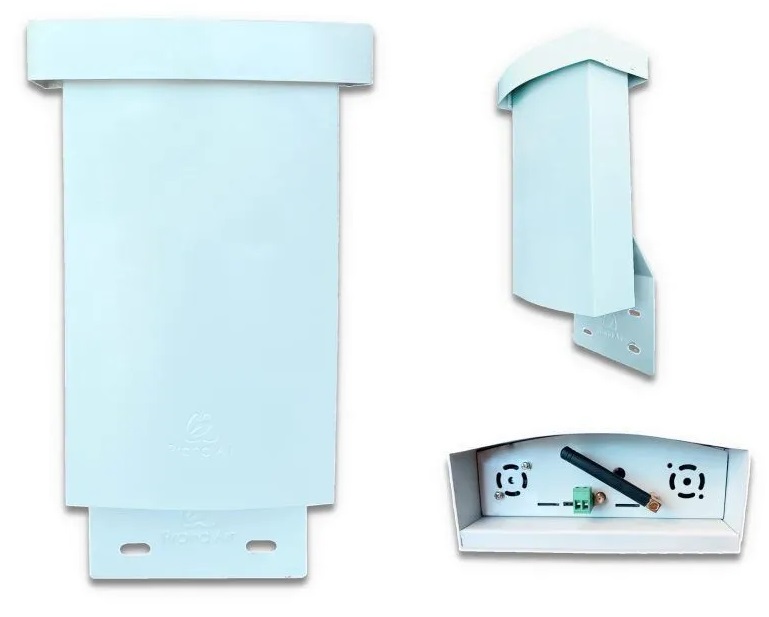- TB Enterprise - Place Where Ideas Convert Into Creation.
- +91-9067176874
- info@tbenterprise.in
Outdoor air quality


Importance of outdoor air quality –
Outdoor air quality is a crucial aspect of public health and environmental well-being. The quality of the air we breathe outdoors directly affects our respiratory system and overall health. Poor air quality can lead to various respiratory and cardiovascular diseases, as well as worsen existing conditions such as asthma. Additionally, outdoor air pollution has detrimental effects on the environment, including damage to ecosystems and climate change. Therefore, it is essential to prioritize and improve outdoor air quality to safeguard both human health and the planet.
- Impact on human health and the environment –
Outdoor air pollution has a significant impact on both human health and the environment. The pollutants released into the air, such as particulate matter, nitrogen dioxide, and ozone, can have severe consequences for our respiratory system and overall well-being. Long-term exposure to these pollutants has been linked to an increased risk of respiratory and cardiovascular diseases, including lung cancer. Furthermore, poor air quality can worsen existing conditions such as asthma, making it harder for individuals to breathe and leading to more frequent and severe attacks.
- Growing concerns about air pollution in urban areas –
especially in densely populated cities – have prompted governments and organizations to take action to improve air quality. Implementing stricter emission standards for vehicles, promoting the use of public transportation, and increasing the availability of green spaces are just a few measures that have been taken to combat air pollution. Additionally, advancements in technology have allowed for the development of air purifiers and filtration systems that can help remove harmful pollutants from indoor environments. These efforts aim to reduce the impact of air pollution on public health and create healthier and more sustainable cities for future generations.
Sources of Outdoor Air Pollution –
There are several sources of outdoor air pollution that contribute to the deterioration of air quality. One major source is the burning of fossil fuels, such as coal and oil, for electricity generation and transportation. The emissions from vehicles, power plants, and industrial processes release pollutants like carbon dioxide, nitrogen oxides, and particulate matter into the atmosphere. These pollutants can have significant impacts on human health, contributing to respiratory diseases, cardiovascular problems, and even premature death. Industrial activities, including manufacturing and construction, also release pollutants into the air, further contributing to outdoor air pollution.
Health Effects of Poor Air Quality –
Poor air quality can have a range of negative health effects on individuals. One of the most common health problems associated with air pollution is respiratory issues. Breathing in polluted air can irritate the respiratory system, leading to symptoms such as coughing, wheezing, and shortness of breath. Over time, exposure to air pollutants can also increase the risk of developing chronic respiratory diseases such as asthma and chronic obstructive pulmonary disease (COPD). Additionally, poor air quality can have detrimental effects on cardiovascular health.
Factors Affecting Outdoor Air Quality –
There are several factors that can contribute to the degradation of outdoor air quality. One of the main factors is the burning of fossil fuels, such as coal and gasoline, for energy production and transportation. These activities release large amounts of pollutants, including carbon dioxide, nitrogen oxides, and particulate matter, into the atmosphere. Industrial processes and emissions from factories and power plants also contribute to air pollution. Another significant factor is the presence of vehicle emissions, especially in densely populated areas with high traffic volumes.
Monitoring and Measuring Air Quality –
To effectively address air pollution, it is crucial to have accurate and reliable methods for monitoring and measuring air quality. This involves the use of specialized equipment and technologies that can detect and quantify various pollutants present in the atmosphere. One common method is the use of air quality monitoring stations strategically located across different regions. These stations collect data on pollutant levels, temperature, humidity, and wind speed, providing valuable insights into the overall air quality of an area. Additionally, mobile monitoring units equipped with sensors can be deployed to measure air quality in specific locations or during specific events, such as construction projects or wildfires.
Steps to Improve Outdoor Air Quality –
There are several steps that can be taken to improve outdoor air quality. One of the most effective strategies is implementing stricter emissions standards for industries and vehicles. This can involve requiring the use of cleaner fuels, installing pollution control devices, and enforcing regular inspections to ensure compliance. Another approach is promoting the use of renewable energy sources, such as solar or wind power, to reduce reliance on fossil fuels. Additionally, implementing measures to reduce pollution from construction sites, such as using dust control measures and limiting the use of heavy machinery during times of poor air quality, can also have a significant impact.
Reducing emissions from industries and vehicles
Another effective strategy for reducing emissions is implementing stricter regulations and standards for industries and vehicles. This can include setting emission limits for factories and power plants, requiring the use of catalytic converters and other emission control technologies in vehicles, and promoting the use of electric or hybrid vehicles. By targeting these major sources of pollution, significant reductions in emissions can be achieved. Additionally, encouraging the use of public transportation and carpooling can help decrease the number of vehicles on the road and further reduce emissions.
The importance of collective efforts to improve outdoor air quality
Improving outdoor air quality requires collective efforts from various stakeholders. Governments need to implement and enforce stricter regulations on industries and transportation to reduce emissions of harmful pollutants. Additionally, investing in renewable energy sources and promoting sustainable practises can help decrease the overall pollution levels in the atmosphere. However, it is not solely the responsibility of governments to tackle this issue. Individuals also have a role to play in improving outdoor air quality.
Conclusion –
In conclusion, implementing these measures to reduce emissions from industrial sources and transportation can have a significant impact on improving air quality and mitigating the effects of climate change. However, it is important to recognise that individual actions also play a crucial role in reducing emissions. Simple changes such as conserving energy at home, reducing waste, and adopting sustainable practises can contribute to the overall efforts to combat pollution. By working together, both at a governmental and individual level, we can create a cleaner and healthier environment for future generations.



